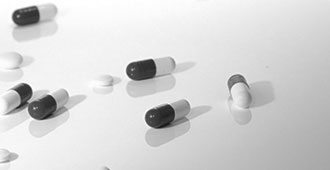What are the Top Pharmaceutical Products Exported from India?
The pharmaceutical industry in India is constantly improving its product quality, business image and establish itself as a reliable provider of safe and effective medications worldwide.
India's pharmaceutical exports continued to increase and hit $25.3 billion (approximately Rs 2,08,231 crore) in the fiscal year 2022-23. Indian government agency under the Ministry of Commerce and Industry, has released this latest data on the country's pharmaceutical products exports.
Top Pharmaceutical Products Exported from India

There has been a dramatic change in the documentation of pharmaceutical contract manufacturing in India as attention turns to globalisation for drugs as a means to save lives. Manufacturers of pharmaceutical products have developed diverse solutions to their production challenges.
- Antidiabetic:
Developing anti-diabetic pharmaceuticals aims to help patients with diabetes and maintaining healthy blood glucose levels. Diabetes treatment typically involves the use of antidiabetic medication.
- Antidepressant:
Drugs of the antidepressant class effectively treat various mental health issues, including serious depression, anxiety, chronic pain, and substance abuse. Antidepressants sometimes have many unwanted symptoms, such as drowsiness, weight gain, dry mouth, headaches, akathisia, sexual dysfunction, and dull feelings.
- Anticonvulsant:
A wide variety of anticonvulsants are available to treat epileptic seizures. Many anticonvulsants also appear to operate as mood stabilisers; therefore, they are increasingly being utilised to treat neuropathic pain and mental health conditions such as bipolar disorder and borderline personality disorder.
- Antibacterial:
To kill germs, an antibiotic is an antimicrobial chemical. Antibiotic drugs are widely used to treat and prevent bacterial infections since they are the most effective antibacterial agent. They could be bactericidal or growth-inhibiting.
- Fibrates:
Cholesterol-lowering fibrates are one class of drugs. They are effective because they lower triglycerides while raising good cholesterol (HDL). Fibrates can greatly reduce the risk of cardiovascular disease, heart attack, and stroke in persons with high triglycerides. Your doctor may give you fibrates.
- Benzodiazepines:
Though typically used to treat anxiety, benzodiazepines can help relieve symptoms of other medical conditions. Benzodiazepines appear to influence neurotransmitters in the brain, chemicals that nerves release to connect with other neighbouring nerves, though the exact mechanism of action is unknown. Gamma-aminobutyric acid (GABA) is one such neurotransmitter; it inhibits neuronal activity.
Benzodiazepines suppress neuronal activity in the brain and spinal cord by boosting the actions of GABA, and scientists believe that this may be the root cause of anxiety and other psychiatric illnesses.
- Inhibitor of Adrenergic Receptors:
Alpha and beta adreno-receptors are the two main types of adrenergic receptors. Alpha-1, alpha-2, beta-1, beta-2, and beta-3 are further subdivisions of these two broad categories. Both alpha-1 and alpha-2 receptors are divisible into three classes. All of these receptors involve G proteins.
- Antihypertensive:
To lower blood pressure, doctors prescribe antihypertensives. Antihypertensive therapy aims to lower blood pressure and reduce the risk of stroke, renal failure, heart failure, and myocardial infarction.
- Antiplatelet:
Drugs that prevent thrombus formation by decreasing platelet aggregation are known as antiplatelet drugs, platelet agglutination inhibitors, or platelet aggregation inhibitors. In contrast to traditional Vitamin K antagonist anticoagulants, they are efficacious in arterial circulation.
Primary and secondary prevention of thrombotic illness, especially myocardial infarction and ischemic stroke, frequently involves antiplatelet medications.
- Antilipemic:
As an antilipemic, it continually prevents the synthesis of triglycerides, which leads to a decrease in low-density lipoprotein synthesis and an increase in high-density lipoprotein.
Key Takeaways
About 70–75% of total exports are medicines, formulations, and biologics. With bulk pharmaceuticals and drug intermediates making up the remaining part.
Other products exported from the country include vaccines, ayurvedic & herbal remedies, and surgical equipment.











